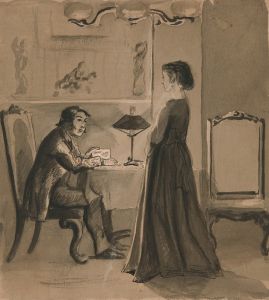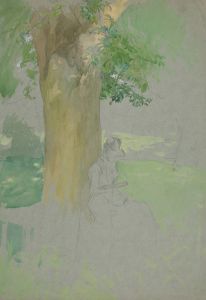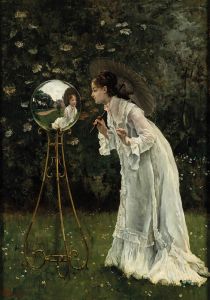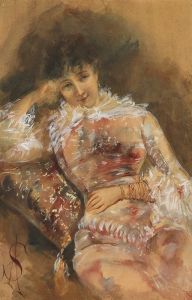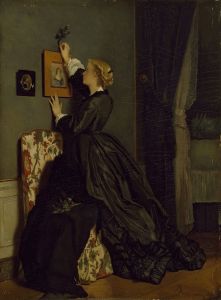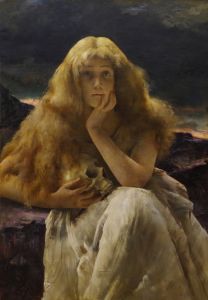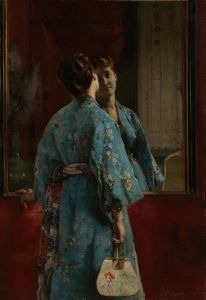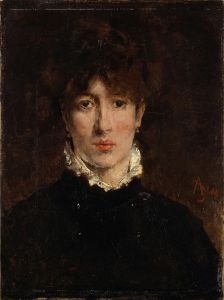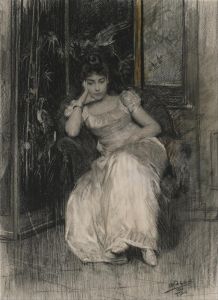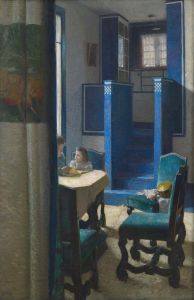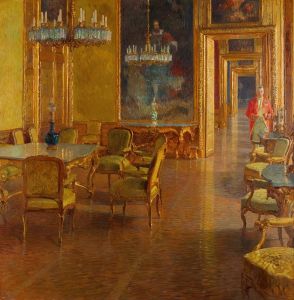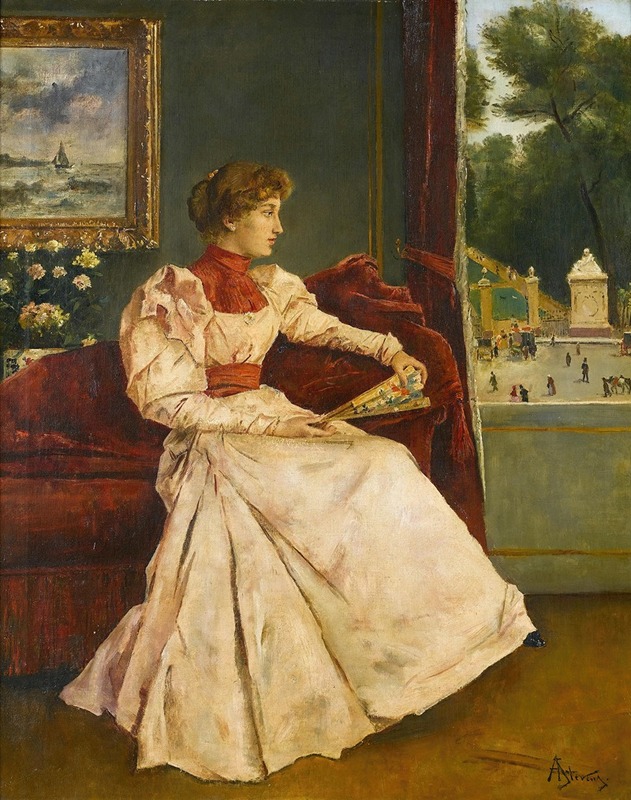
Chez soi
A hand-painted replica of Alfred Stevens’s masterpiece Chez soi, meticulously crafted by professional artists to capture the true essence of the original. Each piece is created with museum-quality canvas and rare mineral pigments, carefully painted by experienced artists with delicate brushstrokes and rich, layered colors to perfectly recreate the texture of the original artwork. Unlike machine-printed reproductions, this hand-painted version brings the painting to life, infused with the artist’s emotions and skill in every stroke. Whether for personal collection or home decoration, it instantly elevates the artistic atmosphere of any space.
Alfred Stevens, a Belgian painter renowned for his exquisite depictions of women and domestic interiors, created the painting "Chez soi" in the late 19th century. Stevens was born in Brussels in 1823 and became a pivotal figure in the art world, particularly known for his ability to capture the elegance and subtleties of bourgeois life. His works often reflect the societal norms and cultural nuances of his time, and "Chez soi" is no exception.
"Chez soi," which translates to "At Home" in English, exemplifies Stevens' mastery in portraying intimate domestic scenes. The painting is a quintessential example of his style, which combines elements of realism with a keen attention to detail and a delicate use of color. Stevens had a unique ability to convey the textures of fabrics, the play of light on surfaces, and the serene expressions of his subjects, all of which are evident in this work.
The painting depicts a tranquil interior scene, likely set in a well-appointed bourgeois home. A woman, elegantly dressed, is the central figure in the composition. Stevens often focused on the theme of women in domestic settings, reflecting both the societal roles of women during the 19th century and the private, introspective moments of their lives. The woman in "Chez soi" is portrayed with a sense of grace and poise, embodying the ideals of femininity and domesticity that were prevalent during Stevens' era.
Stevens' attention to detail is apparent in the meticulous rendering of the room's furnishings and decor. The artist's use of light and shadow adds depth to the scene, creating a sense of warmth and comfort. The color palette is typically subdued, with soft hues that enhance the painting's serene atmosphere. This careful composition invites viewers to reflect on the quiet dignity and beauty of everyday life.
Throughout his career, Stevens was influenced by both the French and Belgian art scenes. He studied at the Académie Royale des Beaux-Arts in Brussels and later moved to Paris, where he became associated with the French Realists. His friendships with artists such as Édouard Manet and James McNeill Whistler further shaped his artistic vision. Stevens' work, including "Chez soi," reflects the cross-cultural influences of his time, blending Belgian and French artistic traditions.
"Chez soi" is a testament to Stevens' skill in capturing the essence of domestic life and the nuanced roles of women within it. His paintings were well-received during his lifetime, earning him critical acclaim and a prominent place in the art world. Today, Stevens' works are held in high regard and can be found in major museums and private collections around the world.
In summary, Alfred Stevens' "Chez soi" is a masterful representation of 19th-century domesticity, showcasing the artist's ability to blend realism with an intimate portrayal of everyday life. Through his detailed and thoughtful compositions, Stevens offers a glimpse into the private world of his subjects, inviting viewers to appreciate the beauty and complexity of the domestic sphere.





